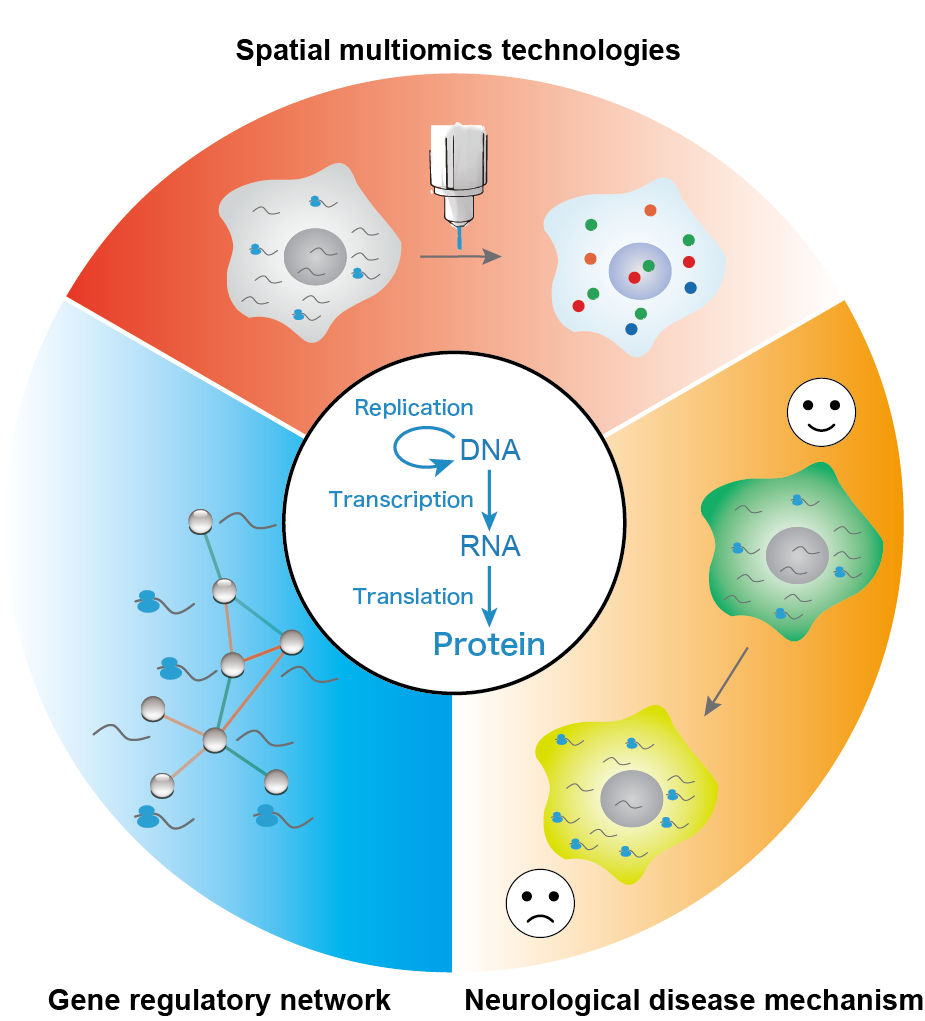Research
The flow of genetic information in cells is from DNA through RNA to protein, which is a fundamental principle and termed the central dogma of molecular biology. Our research program focuses on the central dogma to develop sequencing technologies with spatial, temporal, and single-cell resolution. We apply these sequencing technologies to decipher gene regulatory networks and discover neurological disease mechanism in spatial and temporal dimensions. The specific research content includes the following three aspects:

1) Developing spatial multiomics technologies
Compared to single-cell sequencing technologies, imaging-based spatial sequencing technologies have more precise molecular resolution and can provide multiple layers of information, including tissue structure, cell distribution characteristics, and subcellular localization of genes. Spatial sequencing is considered a new research hotspot in the sequencing field after single-cell sequencing. Current spatial sequencing technologies mainly focus on the transcriptome. We aim to develop spatial multi-omics technologies that can accurately determine multiple omics information at the molecular resolution.
2) Deciphering gene regulatory network
The expression of genes at specific times and places determines the function and fate of cells. How do cells control gene expression to transfer genotype to phenotype is one of the most fundamental questions in biology. Leveraging the spatial multiomics technologies, we can elaborate on the crosstalk and relationships among various regulatory layers to decipher the gene regulatory networks.
3) Discovering neurological disease mechanism
The deepening understanding of disease depends on continuous technological advancements. Based on our technological advantages in the field of spatial sequencing and our experience in conducting interdisciplinary research, we delve into the molecular mechanisms of neurological diseases such as neurodegenerative diseases and brain tumors. We aim to discover the causal relationship between changes in gene expression and disease pathological phenotypes, and to identify intervention points as potential therapeutic targets.
